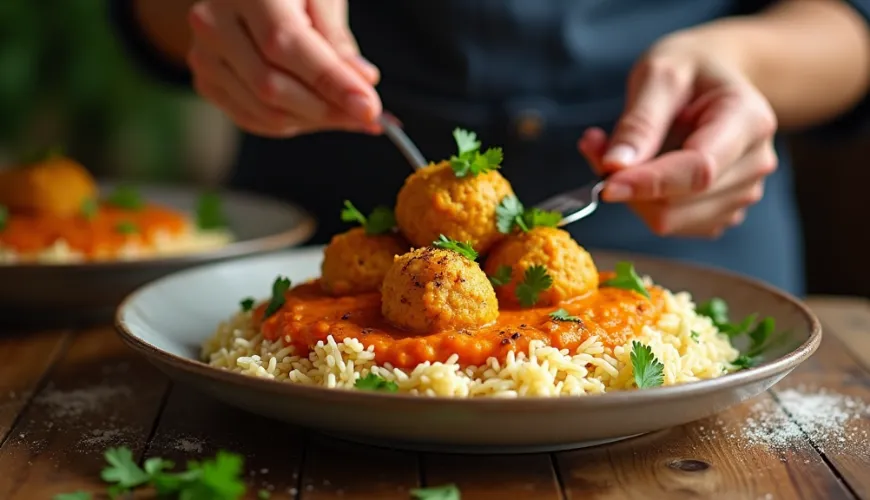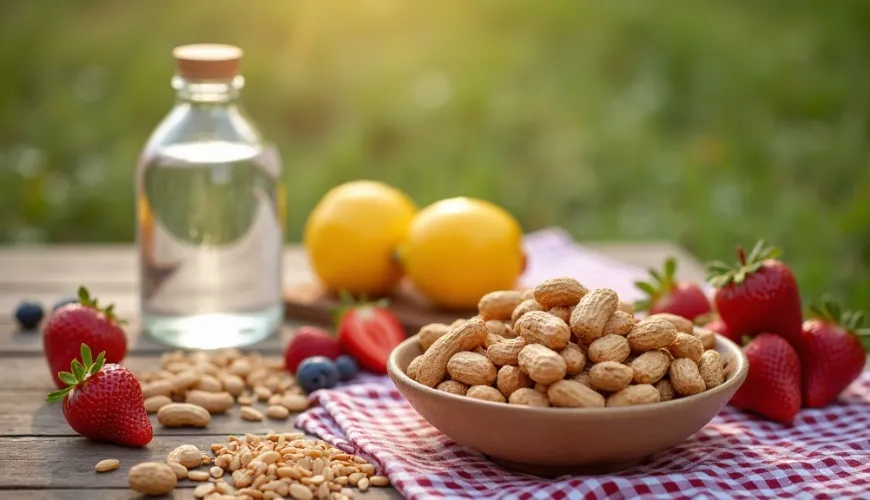
Discover the magic of malai kofta and its creamy taste

Indian Kofta - A Fragrant Treasure of Plant-Based Cuisine
Indian cuisine is known for its incredible diversity, the aroma of spices, richness of flavors, and above all, the ability to prepare entirely plant-based dishes that make you forget about meat altogether. Among the jewels of this cuisine is kofta – balls or logs made from various ingredients, served in sauce or as a standalone dish. Whether it's malai kofta, palak kofta, or other variations, the result is always a delicious and nutritious dish, serving as a great testament that vegan food can be rich, filling, and irresistibly flavorful.
What Exactly is Kofta?
In various cuisines around the world, the word "kofta" means something slightly different. In Arab countries or the Balkans, the word kofta refers to meatballs, often grilled. In the Indian vegetarian tradition, however, it refers to vegetable or legume balls, most commonly made from potatoes, paneer (fresh cheese), spinach, cauliflower, peas, or even tofu, which are then fried, baked, or steamed. The biggest magic, however, lies in the sauce in which the koftas are served – it can be a delicate creamy, tomato-based, or even a bold spinach and garam masala sauce.
Malai Kofta
Among the most popular variants is malai kofta, literally "creamy kofta." Traditionally made from grated paneer, potatoes, and sometimes raisins or cashews, which add a gentle sweetness and texture. The balls are fried to a golden brown and served in a rich, velvety creamy sauce made from tomatoes, cream, and aromatic spices like cardamom, cinnamon, and cloves.
Imagine coming home after a long day, it's gloomy outside, and you warm up a bowl of fragrant malai kofta. The first bite warms you more than any wool sweater – buttery sauce, tender balls, a hint of exotic spices. It not only delights the taste buds but also the soul.
In many households, malai kofta becomes a festive dish for celebrations because its preparation is a bit more demanding – making it all the more appreciated. And the good news is that today there are also plant-based alternatives that do not use dairy products but instead cashew cream or coconut milk, without compromising the taste.
Palak Kofta
Those who love the green color and fresh taste of spinach will succumb to the charm of palak kofta. The word "palak" in Hindi means spinach, and it forms the basis not only of the sauce but often of the balls themselves. Palak kofta is nutritious, full of iron, vitamins, and minerals, yet very light.
The spinach sauce is usually flavored with garlic, ginger, and green chili. The result is a green, aromatic mixture that surprises with its depth of flavor even those who don't usually seek out spinach. In India, palak kofta is often prepared during the winter months when spinach is at its best and the body needs warm, hearty food. This version of kofta is perfect for those looking for a lighter alternative without cream and tomatoes.
Interestingly, palak kofta is increasingly appearing in European vegetarian restaurants because it combines popular Western ingredients with Eastern flavors. Moreover, it can be easily prepared at home if you have some spinach, potatoes, chickpea flour, and a few basic spices on hand.
Kofta Recipe - Simple Basics, Endless Possibilities
Although kofta may seem like a complex dish at first glance, its basic recipe is surprisingly simple. Just have grated potatoes or another starchy vegetable, possibly grated paneer, add some chickpea flour or starch for binding, season with salt and spices – and form balls from the mixture. These are then either fried, baked, or steamed, depending on how healthy a variant you prefer.
The key to success is proper seasoning and texture – the balls should hold together but not be dry. The mixture often includes raisins, nuts, or peas, which add texture and a flavor surprise. And once you've mastered the basic recipe, you can experiment.
For example:
- Zucchini Kofta: an ideal summer variant, where zucchini adds moisture and a delicate flavor
- Cauliflower Kofta with Curry Sauce: a great combination for lovers of spicier dishes
- Tofu Kofta in Thai Sauce: merging Indian style with Asian tones
Kofta in Modern Cuisine
Today, kofta is becoming increasingly popular not only among lovers of Indian cuisine but also among those looking for healthier alternatives to traditional dishes or wanting to reduce meat consumption. Thanks to its versatility, kofta can be a main course, a side dish, or a light lunch in a box.
Moreover, it's the ideal dish for a zero waste approach – balls can incorporate leftover cooked vegetables, older potatoes, or leftover rice. And if there are leftovers, koftas can be easily frozen and used later, saving time and energy.
One of the popular ways to incorporate kofta into a modern menu is to serve it with gluten-free rice, buckwheat, or roasted vegetables. A vegan version of the sauce can be made from cashew nuts, almond milk, or coconut cream, which even someone with lactose intolerance can handle.
In restaurants focused on healthy lifestyles, so-called kofta bowls often appear – bowls full of vegetables, grains, and koftas, topped with tahini or yogurt dressing. They are filling, colorful, and nutritionally rich.
Traditional Dish with Global Reach
It's interesting to see how a traditionally Indian dish becomes part of global cuisine. Kofta is no longer the preserve of Indian households – in Berlin, you can find it in vegan menu cafes, in London in street food trucks, and in Prague, it appears on the menus of bistros focused on healthy eating.
The reason is simple – kofta is tasty, nutritious, and adaptable. Vegans love it because it contains no meat, athletes appreciate its high protein content, and kids? They love its crispy exterior and soft interior.
As the famous Indian chef Sanjeev Kapoor said: "A well-prepared kofta can be the crown of any Indian feast." Whether you prepare it at home or taste it in a restaurant, it can be confidently said that kofta is a dish that connects the world – and tastes just as good to everyone, regardless of language or faith.
All it takes is a few ingredients, a pinch of courage, and an open mind – and your kitchen can smell like an Indian market.

